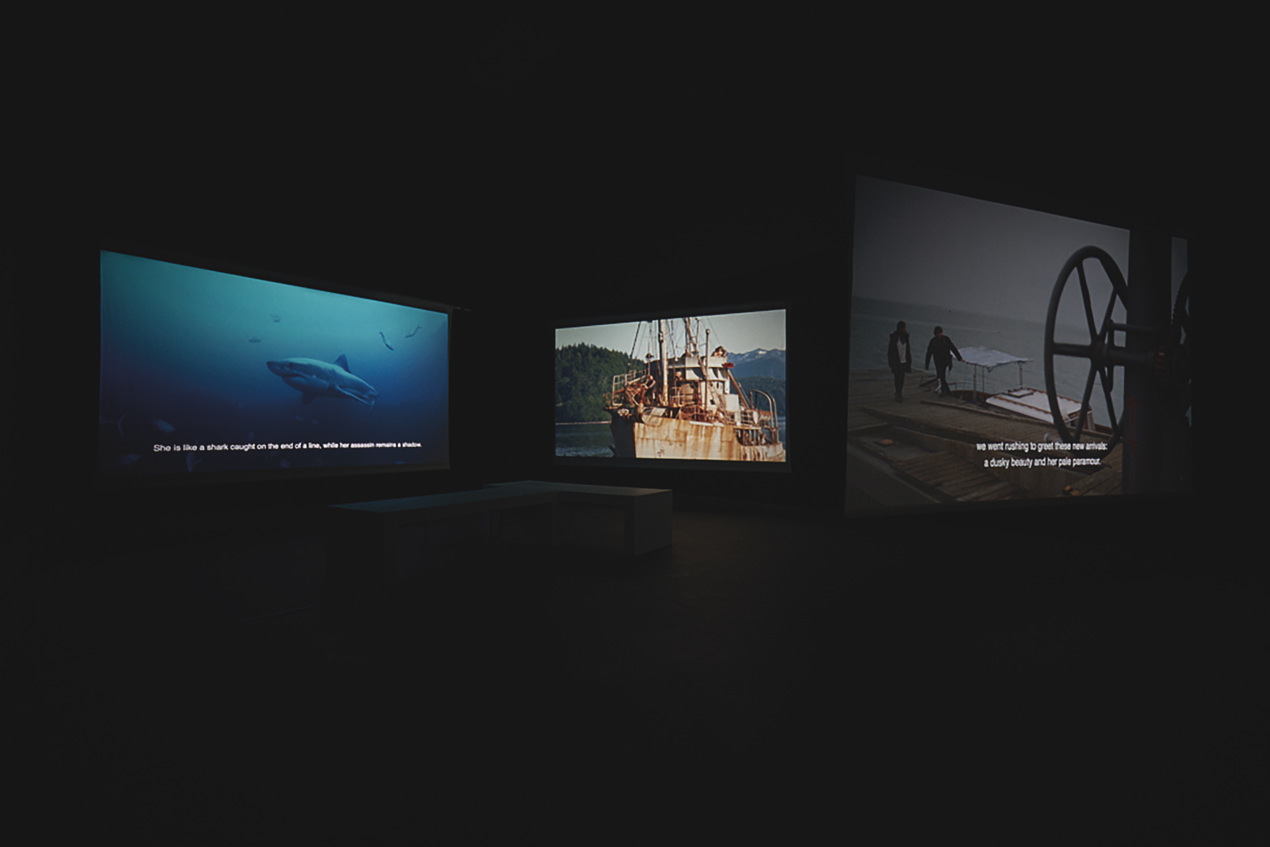Preview: Leviathan and The Ark
In Liverpool this summer two artists are drawing on the Old Testament for their watery, apocalyptic visions of the future
Shezad Dawood knows that calling his artwork Leviathan is ambitious. A gigantic biblical sea creature or a pessimistic treatise on human nature and the state of the body politic written at the height of the English Civil War, a leviathan is usually depicted as a monster or serpent, so huge that it threatens to overwhelm all around it unless it is controlled. Put simply, it’s a metaphor for chaos.
“At home we’ve taken to abbreviating it to LV to stop it overwhelming me,” he laughs. “It didn’t take long for it to get out of control.”
The Leviathan on show at Bluecoat, Liverpool, is half of a yet-to-be completed 10-part film cycle – the first time the first five films have been shown together. It’s set in a near future where human and animal crises are juxtaposed in a tumult of images and scenes, with inversions – sometimes frightening, sometimes funny – of innocence and experience, land and water, heaven and hell.
Life and visceral context are added to the abstract themes of ecological disaster and extinction with stories of loss, abandonment and redemption, where characters are reduced to sometimes startling basic urges. People and animals are clinging on, metaphorically and literally, for dear life.
The first images we see suggest some kind of solar cataclysm, and then loop forward and back from antediluvian to apocalyptic, linked by large bodies of water and – be warned – bodily functions and fluids aplenty.
As during the Civil War, this is a world turned upside down, where release from social, emotional and physical bonds could be freedom or chaos, desirable or terrifying, treasured or squandered. “There are five screens but with definite frissons between the different images,” says Dawood. “It’s about multitudes rather than my single voice.”
Migrants suffer on the surface of the water while the pristine, almost preternatural world below survives and thrives. Dawood’s vision suggests that the many sea monsters, cephalopods and crustaceans that colonise his films could become the dominant species in a post-apocalyptic world. There’s even a talking neon crayfish narrating a virtual reality video game.
“I’ve always been fascinated by what is under the sea,” he says. “As I started meeting with marine engineers and biologists – slightly sheepishly at first – I had an increasing flow of images about the connections between the increasingly dangerous journeys above and the evolving ecology below.”
Following the films through the different rooms of the gallery, with their allegorical imagery, loosely woven structures and unfinished, improvisational qualities, as well as the obvious biblical themes and tropes, is a bit like walking the stages of a medieval mystery play cycle.
Dawood and Grace Ndiritu, whose work The Ark is also on show, are linked by their Old Testament references and apocalyptic tropes of hubristic human civilisation. Ndiritu explores life in rural, off-grid and alternative communities, and her joyous work contrasts with the arid landscapes and lives trapped in cycles of consumerism and capitalism.
The Ark is a place of salvage as well as shelter, and Ndiritu references not just Noah’s Ark but also the Ark of the Covenant, a chest that protects precious texts and iconic religious items. Ndiritu’s Ark, however, contains colourful costumes, protest placards, animal masks and the manifestos of alternative communities. Also akin to mystery plays, the pageantry here is created through participation.
Both artists are exploring better ways to live, to “reconcile ourselves to nature and rediscover our place within and not outside it,” as Dawood puts it. Both reach towards some kind of pre-Fall habitat by looking back or beyond the malaise we have created – the sinking city of Venice, the post-industrial ports of Britain, the shrinking lakebed of the Dead Sea (where the sixth film in the Leviathan sequence is being filmed) to an off-grid Eden, untainted by urban pollution and moral corruption, literally and symbolically a state of grace.
Leviathan and The Ark are at the Bluecoat, Liverpool, until 13 Oct (thebluecoat.org.uk)

Leave a reply
Your email address will not be published.